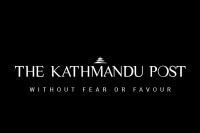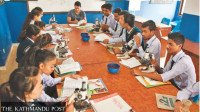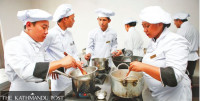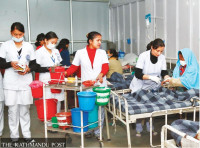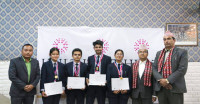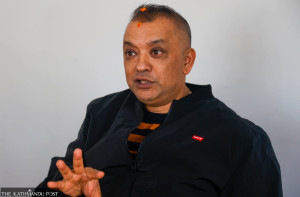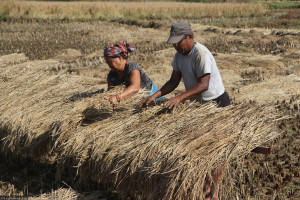Miscellaneous
Preserving memories, sparking conversations
The second iteration of Photo Kathmandu opened in Patan Museum, Patan Durbar Square on Friday, amid a crowd of artists, storytellers, the Valley’s denizens and photo enthusiasts from around the world. Now, the festival’s 12 print exhibition venues—all located around Patan’s core, and Bungamati—are open for public viewing. It will be impossible for one to go around and visit all the venues in one day, but it is certainly possible to choose a route and spend a few hours of your Saturday gazing at different images that tell different stories of different people and different spaces. We’ve come up with one that you can embark on today. It is a route that you can cover on foot, so put on your walking shoes, maybe grab a bottle of water, and start your weekend journey with Photo Kathmandu.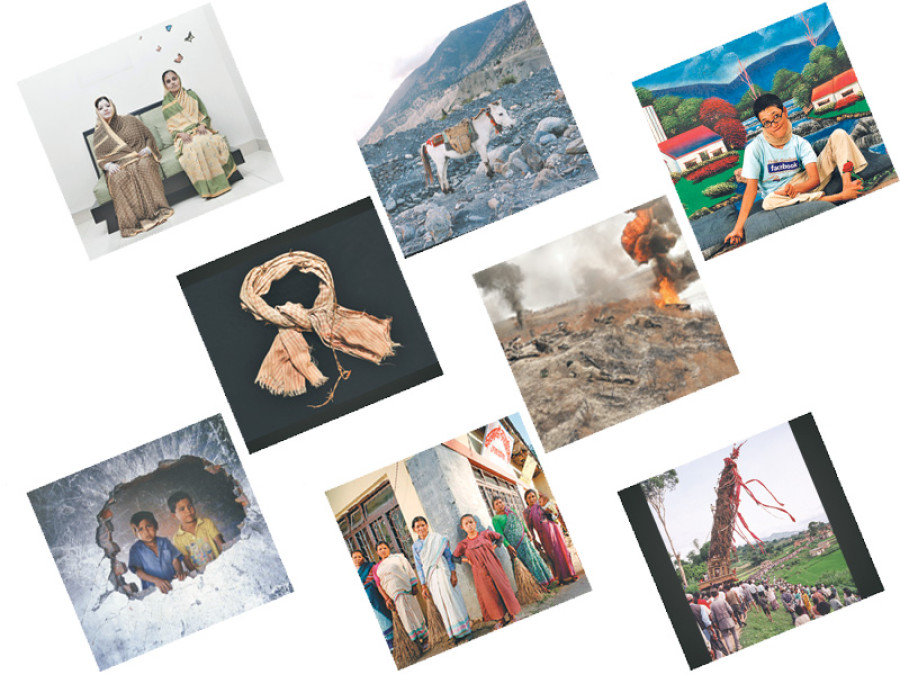
Compiled by Nhooja Tuladhar
The second iteration of Photo Kathmandu opened in Patan Museum, Patan Durbar Square on Friday, amid a crowd of artists, storytellers, the Valley’s denizens and photo enthusiasts from around the world. Now, the festival’s 12 print exhibition venues—all located around Patan’s core, and Bungamati—are open for public viewing. It will be impossible for one to go around and visit all the venues in one day, but it is certainly possible to choose a route and spend a few hours of your Saturday gazing at different images that tell different stories of different people and different spaces. We’ve come up with one that you can embark on today. It is a route that you can cover on foot, so put on your walking shoes, maybe grab a bottle of water, and start your weekend journey with Photo Kathmandu.
Labim Mall
Start from Labim Mall, Pulchowk, where Bangladeshi photographer Jannatul Mawa’s series of couple portraits, titled Close Distance, is being exhibited. Mawa has been photographing unlikely couples in the form of urban Bangladeshi middle-class housewives—or working women—along with their housemaids. Two women are photographed in the drawing-room sofa, a space within the house, the housemaid is always around—cleaning—but never inhabits. While the two women share the same space in their daily lives, the roles they play within the space are very different.
At Labim Mall, an Info Point has also been set up, where information regarding the 15-day festival can be obtained. If you are visiting with the young ones—or anybody else, for that matter—it might be worthwhile grabbing a learning kit. Photo.circle,
the organizer of the event states that the kit is designed for “families, teachers and students of all age groups for a fun, focused and meaningful experience at the exhibitions”.
Patan Durbar Square
From the mall, a 15-minute walk south-east will lead you to Mangal Bazar from where you can take a left to enter the Patan Durbar Square premises.
We recommend you first go to the Bhai Dega premise to experience Nepali photographer ShikharBhattarai’s The Other Side of Annapurna. The travel photographer documents—in his series of photographs from Marpha, a popular stopover on the Annapurna trekking circuit—the daily life of the inhabitants of the area and their relationship with the land. Bhattarai, in a very subtle manner, captures the mundane life of Marpha once the trekking season ends and a sense of desolation that hangs over its striking landscape.
Manimandap
Then, walk over to the nearby Manimandap where Geneva, Switzerland-based photographer Arantxa Cedillo’s Broken Rules is being exhibited. The series of portraits are of Nepali women who have broken the rules and are representatives of change. The photographer has made use of traditionally-used painted studio backdrops, depicting natural scenery to photograph her subjects who are at the forefront of the fight for gender equality and against discrimination.
Patan Museum
Right next to Manimandap is the Patan Museum. Two exhibitions are in store for you within the museum premises. The first one, Dalit: A Quest for Dignity, is a curatorial venture undertaken by Diwas Raja KC (Nepal). The anthology of photographs focus on what dignity means to Nepali Dalits, a group that has faced discrimination and exclusion throughout history, have through time coped with inequality and have come together to gain a new and respectable identity. This section will be on display till November 26.
The second show in the museum is titled Measures of Loss and Memory of War and features photographs by Stephen Champion, Kunda Dixit, IshanTankha and Jonas Bendiksen. The series is a collection of photographs during civil wars in Nepal, Sri Lanka and India. While the photographs are from different places, the images of combatants and civilians caught up in wars have a common thread and a universal quality to them. The show portrays the suffering as well as the inner strength of ordinary people trapped in extraordinary circumstances.
Walking through Photo Kathmandu 2016, there will most definitely be a lot of observing, contemplating and experiencing to do. Patan Durbar Square, decked with four intriguing exhibits in lived-in cultural spaces, also offers an array of eateries for a mid-day layover. Pick from any of the various rooftop restaurants overlooking the bustling Durbar Square, or hound out local hole-in-the-walls, like the famed Honacha—right behind Krishna Mandir, for some delicious traditional fare.
Ibabahi
From Mangal Bazar, if you head south towards Lagankhel, a short, five-minute walk will get you to Simhavarna Rajasri Bihar, also known as Ibabahi. Ibabahi is one among the many Bahis in Patan and once served as a monastery and resting place for travelling monks. Here, you’ll leave behind the vibrant chaos of the busy Chakra Bahi Road as you step into the quadrangle. Here, Alive by Kim Hak (Cambodia) is being exhibited. Hak’s works are still-life photographs based on photographs and objects entrusted to him by local Cambodian families, which trace the memory of people 40 years after the Khmer Rouge regime. Through the show, Hak seeks to keep the memories of the victims and survivors alive, through everyday objects, so that they can be shared in the present and preserved for the next generations.
Ta Baha
Another five-minute walk south-ward will get you to Ta Baha, home to the temple of Rato Matseyendranath. On your way to the Baha, you can spot and muse over wheat-pastes of old Nepali photographs from the Nepal Picture Library’s archive.
Also known as the Dharmakirti Mahavihara, the space is one of the largest bahas in the Valley. Here, Bungayaa by Bruce McCoy Owens (USA) is being exhibited. The curators have made a fitting decision to exhibit some of Owens’ thousands of images of Matseyendranath’s chariot festival from the past 40 years in the same location; the Rain God is housed in. The photographs are a documentation of the extraordinary celebration and the collaboration among people that make the festival possible. The images primarily focus on the events and the communities of Bungmati and Patan, two crucial areas for the festival.
We have come to the end of our route but this is only half of what this year’s Photo Kathmandu has to offer. If you spend today on this route, the rest of the week should leave you with ample time to visit the other equally fascinating exhibits. Also, along with the print exhibitions, the festival is also hosting a set of six evening slide-shows, artist talk programmes and panel discussions that you can participate in. All exhibits at the festival, in their own ways, celebrate human strength and resilience and the eagerness to move forward despite seemingly insurmountable circumstances. With stories of triumph and survival from around Asia, the festival is a toast to the human spirit that always overcomes conflict, disasters and personal challenges, one that undoubtedly will be one of the many ways the Nepali public find the resolve to rise above adversities.
Other shows
#15 Afghan Dream
Afghan Dream is French photographer Sandra Calligaro’s musings on the fragility of everyday life in the turbulent, war-torn country. Her images show daily life, and present Afghan, Kabul is specifically, in the most ordinary way possible, a contrast to the majority of images seen in the media that focus on the spectacle of conflict.
#17 By An Eye-Witness
In By An Eye-Witness, Iranian photographer Azadeh Akhlaghi intricately reconstructs and stages the scenes of significant murders or deaths that occurred in Iran’s recent history. With no visual records of these events, Akhlaghi’s reconstructions, based on news reports, varying witness accounts, and archived sources, in turn become a new form of public commemoration. The images depict the dying moments of Iranian artist, clerics, athletes and revolutionary figures, the death of whom “has been forgotten or stained”.
#5 and #16 Baha
Presented at two different bahas of Patan, this exhibition is the conclusion of an endeavour to encapsulate the spirit of Patan and its stories by six artists who were part of the month-long Photo Kathmandu Artists-in-Residence programme.
#3 Saudi Tales of Love
In Saudi Tales of Love, Tasneem Al-Sultan addresses questions such as: Is marriage necessary to signify that we have love? Is a husband needed to have a significant life? Through the exhibit, Al-Sultan portrays women challenging conventional perceptions of the housewife, marriage and love.
# 14 The Vanishing: Altered Landscapes and Displaced Lives on the Yangtze River
The Vanishing highlights the gradual yet monumental transformation of the once vibrant Three Gorges region into ‘submerged communities’. The show depicts how the world’s largest dam, with its two kilometres long wall, submerged 13 cities, 400 towns and 1,353 villages and, displaced 1.4 million people, altering the regions landscape and lifestyle forever.




 22.12°C Kathmandu
22.12°C Kathmandu
